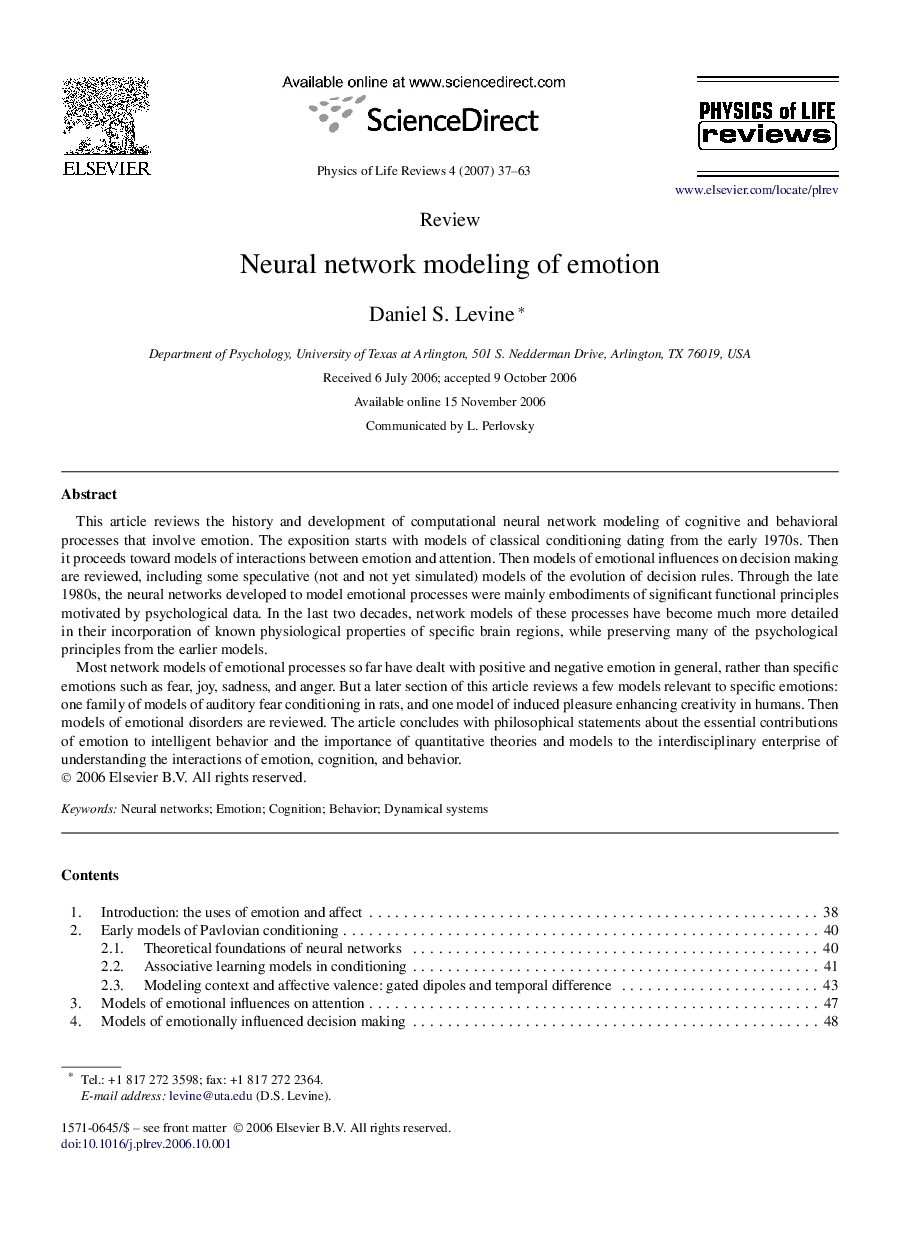| Article ID | Journal | Published Year | Pages | File Type |
|---|---|---|---|---|
| 1873101 | Physics of Life Reviews | 2007 | 27 Pages |
This article reviews the history and development of computational neural network modeling of cognitive and behavioral processes that involve emotion. The exposition starts with models of classical conditioning dating from the early 1970s. Then it proceeds toward models of interactions between emotion and attention. Then models of emotional influences on decision making are reviewed, including some speculative (not and not yet simulated) models of the evolution of decision rules. Through the late 1980s, the neural networks developed to model emotional processes were mainly embodiments of significant functional principles motivated by psychological data. In the last two decades, network models of these processes have become much more detailed in their incorporation of known physiological properties of specific brain regions, while preserving many of the psychological principles from the earlier models.Most network models of emotional processes so far have dealt with positive and negative emotion in general, rather than specific emotions such as fear, joy, sadness, and anger. But a later section of this article reviews a few models relevant to specific emotions: one family of models of auditory fear conditioning in rats, and one model of induced pleasure enhancing creativity in humans. Then models of emotional disorders are reviewed. The article concludes with philosophical statements about the essential contributions of emotion to intelligent behavior and the importance of quantitative theories and models to the interdisciplinary enterprise of understanding the interactions of emotion, cognition, and behavior.
